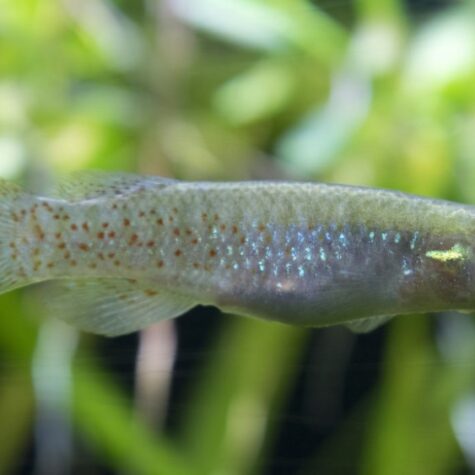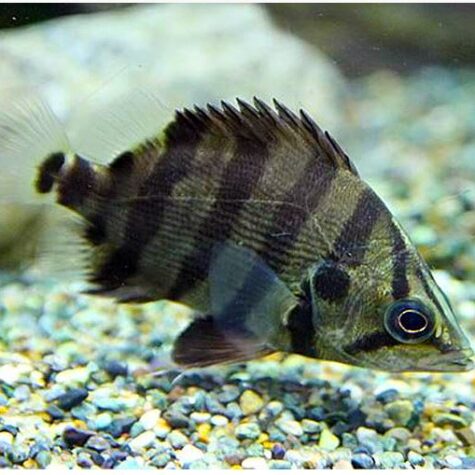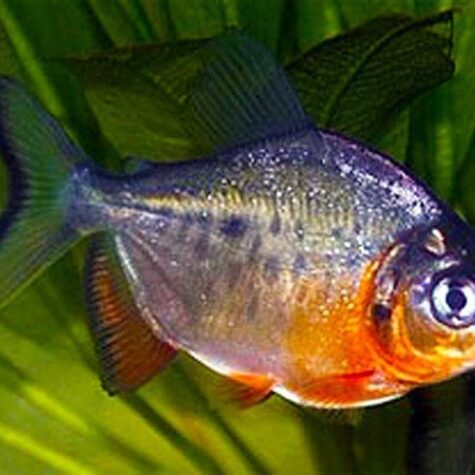$39.00 Original price was: $39.00.$32.00Current price is: $32.00.
*NOTE: AS A FISH FARM, WE DO NOT OFFER GENDER SPECIFIC SEXING ON FISH STOCK. REQUEST FOR MALES OR FEMALES CAN ONLY BE ACCOMMODATED IF THE ITEM SPECIFIES GENDER IN THE DESCRIPTION SUCH AS: MALE BETTA, FEMALE GUPPY, ETC SORRY FOR ANY INCONVENIENCE.
Freshwater Amazon Puffer
Colomesus asellus
Native to: South America, Amazon River
Temp: 72-82°F
pH: 5.5 – 7.0
Hardness: 5-15°H
Size -up to 2″ in home aquarium. The largest documented in wild was 5.6″ (14cm)
This is what many will call “the NICE Puffer”. It is not a brackish water puffer like others, although it will most likely breed in brackish conditions, this fish is best kept in a well-planted South American style setup with driftwood or branches to provide refuge along with floating plants to provide the dim light conditions native to it’s region. Like most puffers, it is sensitive to poor water conditions, so regular partial water changes and good filtration is a must. The explanation for this “niceness” may come from its distinctive mode of reproduction, since most other freshwater puffers guard their eggs and fry, the South American puffer does not. They are an egg scattering fish, scattering their eggs onto the substrate, and the fry (once they emerge) will spend a period of time floating down the river as plankton. So, South American pufferfish have no reason to be territorial. Actually, since they are not tied to one particular place anyway because they migrate up and down rivers, then moving into lakes for part of the year, they would have no reason to be on-guard or aggressive.
This is a very active but the peaceful anbd gentle little fella. The C. asellus can be kept in a community tank with other robust species. It may nip the fins of long-finned or slow-moving tankmates, so these are best avoided. Keep with medium-sized characins, barbs, larger rasboras and peaceful cichlids such as Apistogramma or Rams. Although this puffer can’t really be termed as a shoaling or schooling species, it’s usually found in large, loose groups in nature. It will live in harmony without too many disputes amongst each other in captivity.
Will feed on lots of different and interesting foods such as freeze dried krill, freeze dried bloodworms, invertebrates, as well as worms and other live foods. It should be offered snails if possible, so this fish is great if you have a noxious snail explosion. The snail shell are good for this fish so it can maintain it’s sharp teeth. As with other puffers, their teeth grow continuously and become a problem for the fish if they’re not kept ground down.
DID YOU KNOW? Puffers have the ability to inflate their elastic stomachs with water or air. This is usually a response to some kind of threat, although in the aquarium many specimens appear to inflate themselves for no apparent reason. The fish becomes two or three times it’s normal size, which is big enough to scare away many potential predators, or make it difficult to swallow. Puffers are also one of the few fish that can actually blink or close their eyes.
With being sensitive to poor water conditions, it’s important to make sure there are regular, partial water changes as well as good filtration. It is best to stock with tank mates of the same size. The diet of the Freshwater Amazon Puffer includes freeze dried krill, freeze dried bloodworms and invertebrates. This puffer will grow to about 2 inches.




